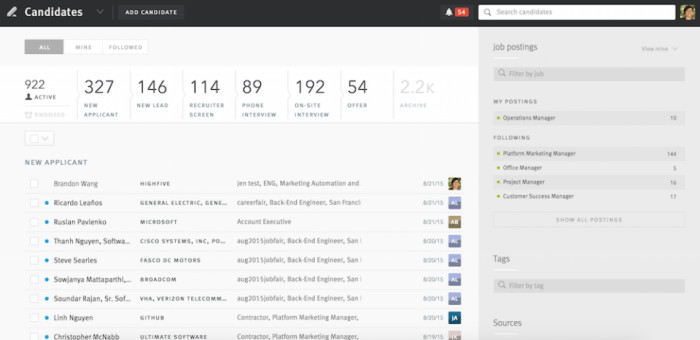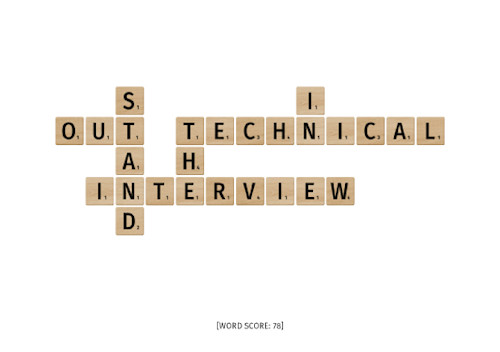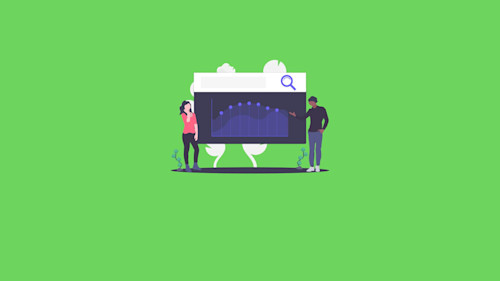

How to Write a Software Engineer Resume

Your resume is the key to the door for your next job. If you're looking to land that next role, here are the awesome tips you need to know to make your resume stand out from the rest.
The most effective resume speaks to the audience. Before you start on your resume, ask yourself: who is my audience? In most cases, that audience is a recruiter, a hiring manager, and ... robots?
That's right, robots are reading your resume! Before a recruiter or hiring manager sees it, a robot will parse and read the resume. When you submit your resume in a form online, via LinkedIn, and even sending it via email; it all goes through a robot. It's super helpful to know how your resume makes it through the funnel so that we can optimize it to make it further.

This graphic visualizes just how many resumes make it from the initial submission down the funnel. When a company is hiring a software engineer, a recruiter will screen submissions using an Applicant Tracking System (ATS).
These systems parse a software engineer's resume to fit in the system. In addition, it will highlight the keywords that fit the job description. Recruiters have one of the hardest jobs of all, finding the best submissions. When a recruiter is trying to find software engineers, this is how they're looking for leads to reach out to:

Once your resume makes it here, it's all about the content of your resume. A recruiter will prioritize the candidates with the best resumes and set up an initial call. To get there, you will need to format and write a kickass resume.
Software engineer resumes need to be ATS-ready. To get there, here are the top tips you will want to know:
- Use .doc format when uploading, PDF when emailing.
- Avoid complicated layouts, such as tables or columns.
- Use standard fonts and bullet points.
- No images
- One page, no more or less.
These tips will help you format your resume in a way that the ATS systems understand, to get through the top of the funnel.
Here is an ATS Resume Template you should use to get started, created by an ex-recruiter who worked at top companies and screened thousands of resumes.
How does a software engineer get their resume further down the funnel?Let's talk about how you can leverage ATS-formatting, and write a kickass resume that will get you more attention from the top of the funnel, to increase your chances of getting an interview.
This is your moment to wow the recruiter and the hiring manager. Resumes are all about selling yourself - describing your abilities and your impact.
Before we get into some specifics, here are some general tips you should know:
- Use a new bullet point for each responsibility, role, or other ability you're describing.
- Be specific, use action verbs.
- Be honest! Do not embellish or lie on your resume.
- Include metrics or statistics that can demonstrate impact and value.
With that in mind, let's get into some really helpful specifics.

When you are describing your position, you will want to use the STAR Method.
- Situation: Your role and responsibility.
- Task: Demonstration of applying your expertise in that role.
- Action: The efforts you made, whether acting alone, collaborating, or delegating.
- Result: The outcome of that action, including the value and impact it had on the team and the company or business.
Using this framing method, we will extract the most value out of our resume and create meaningful statements that are great conversation points when talking to recruiters and managers.
Let's Look at an Example:Wrote code in HTML, JavaScript, and CSS for website application.That's a good start!
We could do better to capture the STAR power of this resume item. Almost every software engineer with a resume will have something like this on their first draft.
To add that STAR power, ask questions like:
- What is unique or influential about the situation?
- How does the task relate to the job description?
- What actions are the hiring manager looking for?
- Why does the result matter to the company I want to work for?
These questions will help you frame your resume items, so that you can say something like this:
Developed a single-page front-end application using HTML, JavaScript (JS), and CSS - to optimize the responsiveness, which increased conversion rate from 2% to 7%.Much Better!
With this change of wording we can see how this stands out from the example we saw earlier. Bring STAR power to all of your experience.

When you're writing your resume, you will want to use the keywords that appear in the job description. So for example, if you are applying for a "Software Engineer" position, you will want to say that somewhere in your resume. On the other hand, if the position is titled "Web Application Developer," then you will want to incorporate that as well.
So from our example above, "Developed a single-page application," we will also want to expand on the word "developed." Here are some other words that you will want to capture in your descriptions to broaden the appeal:
- Implemented
- Architected
- Engineered
- ... and so on!
Using synonyms in addition to the keywords will allow your resume to match as many job descriptions as possible.
A description that is too vague or too short can come across as uninspiring. When in doubt, use the STAR method. A resume doesn't need to be ten pages long, however, it does need to be long enough to evoke curiosity.
If your resume is shorter than a page, you will want to create more experience before you start sending that resume out.
Similar to the point above, a resume is meant to be used to match against a job description and fulfill a recruiter's requirements. From there, the purpose of a resume is to inspire and evoke curiosity from a hiring manager and the interview panel.
One Page is the optimal length for a resume. You only need to highlight the last few positions that are relevant. Even if you have decades of experience, your resume needs to be compelling enough to leave an impression within ten seconds. When you're at the top of the funnel, that is about how long someone will glance at your resume before moving on to the next one.
A description that is loaded with responsibility and impact, or runs on more than a sentence or two - can actually have the reverse effect! Too much of a description can come across as appearing to know too little or give the impression of overselling.
Here's an example:
Designed a webpage using Photoshop, creating multiple layers and exporting them via a PNG. Collaborated with engineering to deliver the PNG in a ZIP file. Planned and coordinated the delivery before the agreed upon timelines. Communicated with the team to revise the delivery throughout the project.
A statement like this can undervalue your position. Why this happens is because when we look back at the STAR method - this description is mostly a given. It is expected that a designer would perform these tasks, and it doesn't add much value to those expectations.
Let's look at that, with a little more STAR power:
Designed a webpage in collaboration with engineering, working cross-functionally with the project team to deliver ahead-of-time. This resulted in us reaching the market before our competition.
Now that's a star! The difference here is how much value the designer brought to the role, exceeding the expectations.
Many of the resumes that get filtered out at the top of the funnel will have a giant cloud of keywords that are meant to fool the ATS robots. This is called keyword stuffing. What happens is that an innocent software engineer will create a skills list that they used at a position, and the robot will interpret this as keyword stuffing.
Skills: React, Photoshop, Microsoft Word
What you want to do instead is take the most important skills that are relevant to the hiring position, and express those at bullet points in your resume items.
Developed a React web application to display order inventory.
Optimized web assets using Photoshop to reduce application size.
Collaborated on project specifications using Microsoft Word.
In some cases, a particular skill can be so ubiquitous to the role that it's not worth including at all. If the skill is very common, it is only worth mentioning if it added value or made an impact on the result.
You've written your resume, formatted it to be ATS-ready, and demonstrated your STAR power. Now it's time to submit your resume, right?
Before you submit your resume, do one final check. Find the job description and compare it with your resume. You should have included similar keywords such as:
- The Job Title
- Situation and Action Words from the hiring position
- Keywords from the hiring description
Once you've done that, review your resume and submit it! You've done everything right, and your resume is ready to go. From there, you will want to learn more about how you can stand out in the technical interview.
If you found these tips helpful, or you have some advice you would like to add - you can reach out to me on Twitter (@coleturner).
Photos by: Markus Winkler, Gatis Murnieks, Brett Jordan




